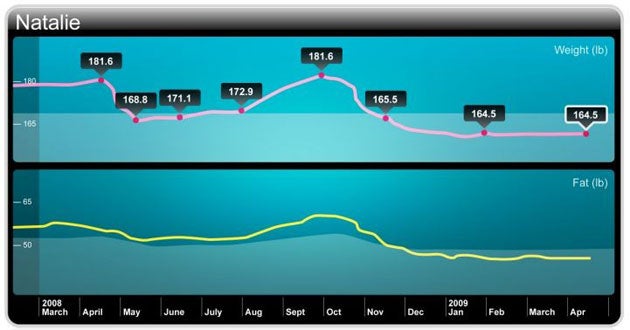Log on to stay healthy: A host of gadgets can now monitor everything from blood pressure to body mass

Your support helps us to tell the story
From reproductive rights to climate change to Big Tech, The Independent is on the ground when the story is developing. Whether it's investigating the financials of Elon Musk's pro-Trump PAC or producing our latest documentary, 'The A Word', which shines a light on the American women fighting for reproductive rights, we know how important it is to parse out the facts from the messaging.
At such a critical moment in US history, we need reporters on the ground. Your donation allows us to keep sending journalists to speak to both sides of the story.
The Independent is trusted by Americans across the entire political spectrum. And unlike many other quality news outlets, we choose not to lock Americans out of our reporting and analysis with paywalls. We believe quality journalism should be available to everyone, paid for by those who can afford it.
Your support makes all the difference.Get up. Get on the scales. What next: laugh? Cry? Lunge for the nearest laptop and check how your weight compares, graphically-speaking, to its value this time last year, last month, yesterday? All while your vitals are transmitted through the ether and posted to Twitter, where your followers can tweet their response: recrimination, encouragement, advice. What fun!
Technology increasingly has designs on your health. As Jetsons-esque as the above scenario may sound, it's a reality: this January, thanks to the Withings special WiFi scales (that monitor not just weight, but also your BMI, your fat mass and your lean mass) dieters across Britain can use the power of the internet to help them (pictured).
And it's not just weight-loss which is getting the 21st-century treatment: a host of other devices have popped up, offering aid with everything from marathon training to skincare. This week, at the Consumer Electronics Show in Las Vegas, Withings unveiled a blood pressure monitor that can be plugged into an iPhone or iPad to display instant statistics.
"Until about two years ago there wasn't that much about," explains Andy Birch, head of product at Virgin Active, "but over the past two years, the field has exploded – it's a great way for people to improve their health. It's going to be huge."
It was fitness that was the first frontier of hi-tech health. One basic but impressive gizmo is Gmaps Pedometer, a Google hack which allows runners and cyclists to plot their route, work out how many miles have been covered and how many calories burnt.
More sophisticated are the variety of options available from companies such as Nike and Adidas. For the past few years, Nikeplus.com has allowed runners to log-on, interact, and track their progress on the Nike+ sport band (which includes a GPS chip) or the Nike+ iPhone app. As of this spring, things are going to get even more advanced: the company has announced the launch of a new running watch. As well as offering GPS and access to Nikeplus.com, it will provide personalised advice, motivational challenges and run reminders.
Elsewhere, the field of "mHealth" has been under development for some time. Using mobile phones and handheld wireless, doctors are able to keep in contact with patients. Whether it is by sending a text message to remind them of their appointments, or by offering remote pre-natal care, support during recovery from addiction and health-awareness messages (on, for instance, the virtues of sunscreen), mobile phones can be deployed in all sorts of health-bolstering ways.
And it's not just by phone that doctors can keep in touch with their patients. The Connected Health Symposium in Boston last October saw scientists present technology that can read not just blood pressure, but also heart rate and temperature, before sending it directly to a doctor. The idea is to remove the need for patients – particularly those with a chronic condition – to make regular visits for check-ups. Instead, they could simply be called in if their data was awry.
Meanwhile, dermatologists in the United States have begun to use "teledermatology" as a means of staying in touch with patients, despite a critical shortage of practitioners. Patients can send digital images, or make "e-visits" to their doctor. With a dedicated Centre for Connected Health station is Massachusetts, the options look likely only in get broader.
When it comes to health, the future is very much online.
Join our commenting forum
Join thought-provoking conversations, follow other Independent readers and see their replies
Comments